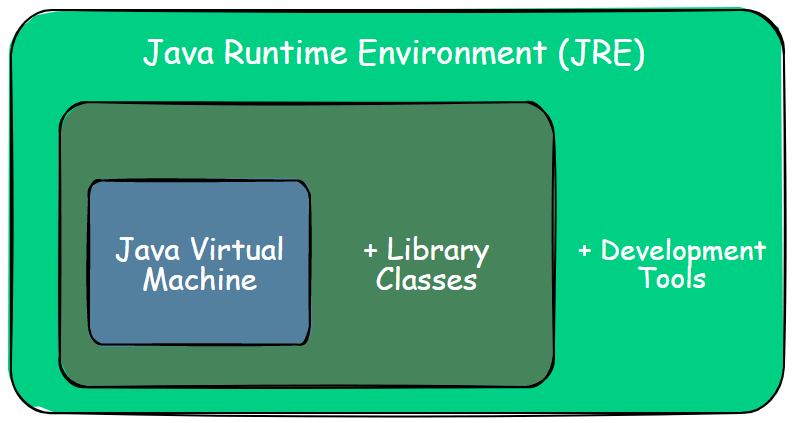The Java Runtime Environment (JRE) is an integral part of the Java Platform, serving as the foundation for running Java applications. It plays a crucial role in executing Java programs by providing the necessary runtime environment and libraries.
What Is JRE (Java Runtime Environment)?
The Java Runtime Environment (JRE) is part of the Java Development Kit (JDK). It’s a free package that includes the Java Class Library, special tools, and a Java Virtual Machine (JVM). To run the Java program on any device, the device should have JRE.
Java Compiler converts the Java code to byte code, and if you want to run that bytecode on any platform, you need JRE. Java Runtime Environment handles tasks like loading classes, memory access verification, and resource retrieval, effectively acting as a layer atop the operating system.
Components of Java JRE
Here’s a breakdown of its key components and functions:

- Java Virtual Machine (JVM): The Java Runtime Environment includes the JVM responsible for executing Java bytecode. It interprets and runs Java programs by converting bytecode into machine code or executing it directly through Just-In-Time (JIT) compilation.
- Class Libraries: JRE contains a set of class libraries and APIs (Application Programming Interfaces) that Java applications rely on for various functionalities. These libraries include classes and methods for file handling, networking, and user interface development.
- Java Launcher: The Java Runtime Environment includes tools like the Java command-line tool, which allows users to start Java applications. This command can launch Java applications by specifying the main class or JAR file.
- Support for Java Applets: Although applets have become less common in modern web development, the JRE traditionally supported the execution of Java applets in web browsers. However, modern browsers have largely discontinued support for Java applets due to security concerns.
In summary, the JRE is essential for running Java applications on a computer. It provides the necessary runtime environment, including the JVM and class libraries, to ensure that Java programs can execute correctly. Developers and users must install the JRE on their systems to run Java applications.
Working Of JRE
The Java Development Kit (JDK) and Java Runtime Environment (JRE) collaborate to establish a stable runtime environment, ensuring the smooth execution of Java applications across various operating systems.
The Java Runtime Environment (JRE) architecture consists of the following elements as listed:
Now, we will discuss the above elements of JRE components in detail:
ClassLoader
The Java ClassLoader is like a helper that brings the classes and loads those classes to run the Java program. The ClassLoader doesn’t load everything at once; it loads only when required. The Java Runtime Environment uses this ClassLoader to do this automatically. When the Java Virtual Machine (JVM) starts, it loads three different ClassLoaders.
If You Want to Learn more about ClassLoader, follow this link, where we have discussed the ClaassLoader in detail.
Bytecode Verifier
Think of the Bytecode Verifier as a security guard. Its job is to check the bytecode to ensure it won’t cause any problems for the interpreter. The code can only be understood and executed if it passes the checks done by the Bytecode Verifier, which looks at its format and checks for anything that’s not allowed.
Interpreter
Once the bytecode is loaded, the Java interpreter makes a special object for the Java virtual machine. This helps the Java program run smoothly on the computer it’s on.
Finally, if you want to know the basic difference between JDK, JVM, and JRE, follow this link.
Conclusion:
In conclusion, the Java Runtime Environment (JRE) is the essential bridge that enables the seamless execution of Java applications on diverse computing platforms. It includes the Java Virtual Machine (JVM) and the Java Class Library, providing the necessary runtime environment for Java programs to run smoothly.
Whether you are a developer or an end user, understanding the role of JRE is important in the world of Java. Please comment in the section below if you have any further questions or need clarification on this topic or any other Java-related queries. Your inquiries are greatly appreciated!
